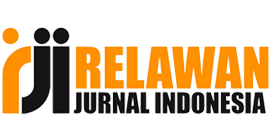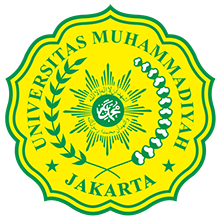ANALISIS POTENSI LISTRIK PADA TEKNOLOGI TEPAT GUNA KINCIR AIR
Abstract
Streams can be used for micro and pico-scale power plants. Water wheel technology has long been used by the community to raise river water to rice fields by utilizing the spinning wheel. Farmers in Gedongan Hamlet, Bondowoso Village, Magelang Regency have long used this technology as a pump to raise river water to rice fields that are elevated above the river. From the literature review it is known that the cross flow turbine from a waterwheel can produce energy by working the rotation and torque of the wheel. However, the appropriate technology has not been used as a piko power generator. The purpose of this study is to determine the amount and power of energy produced by waterwheels so that the potential electricity produced is known. The benefit of the research is that it can increase electrification in rural areas, especially for street lighting with cheap, environmentally friendly and sustainable technology. The research method was carried out by collecting primary data in the field by measuring the amount of rotation of the watermill due to river velocity. The research stages carried out are selecting a specific research location, preparing tools and materials such as waterwheels, rpm meters and tacho meters, mobilizing measuring instruments, collecting field data, analyzing data, compiling results and reports. Based on research that has been done, the electric potential generated by traditional waterwheels is 80 watts, while the electrical energy generated from the spinning wheel is 7.5 watts.
Keywords
Full Text:
PDFReferences
Azhari, B., Prawinnetou, W., & Hutama, D. A. (2017). Design of a Quasi-Flat Linear Permanent Magnet Generator for Pico-Scale Wave Energy Converter in South Coast of Yogyakarta , Indonesia. In Renewable Energy Technology and Innovation for Sustainable Development AIP Conf. Proc. 1826, 020024-1–020024-12; (Vol. 1826, hal. 1–12). https://doi.org/10.1063/1.4979240
Carlo, J., Zambrano, I., Michavila, J., Pinilla, E. A., Diehl, J. C., & Ertsen, M. W. (2019). Water Lifting Water : A Comprehensive Spatiotemporal Review on the Hydro-Powered Water Pumping Technologies. Water, 11(1677), 1–33.
Cho, J. (2018). Optimization of the Water Volume in the Buckets of Pico Hydro Overshot Waterwheel by Analytical Method Optimization of the Water Volume in the Buckets of Pico Hydro Overshot Waterwheel by Analytical Method. In QIR. IOP Conf. Series: Materials Science and Engineering 316 (Vol. 316, hal. 1–9). https://doi.org/10.1088/1757-899X/316/1/012056
Diniardi, E., Ramadhan, A. I., Fithriyah, N. H., & Dermawan, E. (2018). Analisis Daya Piezoelektrik Model Hybrid Solar Cell-. Jurnal Teknologi, 10(2), 139–146.
Du, J., Shen, Z., & Yang, H. (2020). Study on the e ff ects of runner geometries on the performance of inline cross- fl ow turbine used in water pipelines. Sustainable Energy Technologies and Assessments, 40(December 2019), 100762. https://doi.org/10.1016/j.seta.2020.100762
Fatra, W., & Yasri, I. (2019). The Performance of Undershot Water Wheel On Irrigation with Four Steps Mechanical Transmission and A Flywheel. International Journal of Engineering and Technology (IJET) The, 10(6), 1744–1750. https://doi.org/10.21817/ijet/2018/v10i6/181006045
Ibrahim, G. A., Haron, C. H. C., & Azhari, C. H. (2010). Sustainable Rural Energy : Traditional Water Wheels in Padang ( PWW ) Indonesia Sustainable rural energy : traditional water wheels in Padang ( PWW ), Indonesia. Int. J. Renewable Energy Technology, 2(1), 23–31. https://doi.org/10.1063/1.3464893
Indonesia, K. E. R. (2018). Handbook of energy & economic statistics of indonesia.
Jamlay, K., Sule, L., & Hasan, D. (2016). Perancangan Roda Air Arus Bawah Sudu Bengkok Sebagai Pembangkit Listrik Tenaga Picohydro di Desa Tamangil Design of Undershot Waterwheel Curved Blades as Picohydro Power Plant Generation in Tamangil Village. Jurnal Teknik Mesin Institut Teknologi Padang, 6(1), 32–37.
Masud, I. A., Yusuke, S., & Suwa, Y. (2019). Performance prediction of zero head turbine at different water levels. In 2019 3rd International Conference on Energy and Environmental Science, IOP Publishing (hal. 1–6). https://doi.org/10.1088/1755-1315/291/1/012048
Muchtar, M. (2016). Model of Ocean Wave Energy Converter Based on Water Mass Gravity Force as a Renewable Energy Source. International Journal of Innovative Research in Advanced Engineering (IJIRAE), 3(10), 28–34.
Prasad, N., & Nguyen, P. H. (2019). An Overview Introduction to Low-Head Hydropower in Vietnam : Visions towards a Greener Vietnam 2030 and Beyond. In 2019 International Symposium on Electrical and Electronics Engineering (ISEE), IEEE Publishing (hal. 205–210). IEEE.
Quaranta, E, & Revelli, R. (2016). Optimization of breastshot water wheels performance using different in fl ow con fi gurations. Renewable Energy, 97, 243–251. https://doi.org/10.1016/j.renene.2016.05.078
Quaranta, Emanuele. (2018). Energy for Sustainable Development Stream water wheels as renewable energy supply in flowing water : Theoretical considerations , performance assessment and design recommendations. Energy for Sustainable Development, 45, 96–109. https://doi.org/10.1016/j.esd.2018.05.002
Quaranta, Emanuele. (2020). Estimation of the permanent weight load of water wheels for civil engineering and hydropower applications and dataset collection. Sustainable Energy Technologies and Assessments, 40(January), 100776. https://doi.org/10.1016/j.seta.2020.100776
Quaranta, Emanuele, & Müller, G. (2018). Sagebien and Zuppinger water wheels for very low head hydropower applications. Journal of Hydraulic Research, 1686(22), 1–11. https://doi.org/10.1080/00221686.2017.1397556
Quaranta, Emanuele, & Revelli, R. (2018). Gravity water wheels as a micro hydropower energy source : A review based on historic data , design methods , e ffi ciencies and modern optimizations. Renewable and Sustainable Energy Reviews, 97(August), 414–427. https://doi.org/10.1016/j.rser.2018.08.033
Quaranta, Emanuele, & Revelli, R. (2020). Performance Optimization of Overshot Water Wheels at High Rotational Speeds for Hydropower Applications. J Hydraul Eng, 146(9), 1–5. https://doi.org/10.1061/(ASCE)HY.1943-7900.0001793
Renewable, I., & Agency, E. (2019). RENEWABLE CAPACITY STATISTICS 2019 STATISTIQUES DE CAPACITÉ RENOUVELABLE 2019 ESTADÍSTICAS DE CAPACIDAD.
Salleh, M. B., Kamaruddin, N. M., & Mohamed-kassim, Z. (2019). Savonius hydrokinetic turbines for a sustainable river-based energy extraction : A review of the technology and potential applications in Malaysia. Sustainable Energy Technologies and Assessments, 36(July), 100554. https://doi.org/10.1016/j.seta.2019.100554
Shahabudin, N., Ibrahim, T., Akmal, N., & Zamri, M. (2017). Portable Pico Linear Generator Design with Different Magnet Shapes for Wave Energy Conversion System. International Journal of Power Electronics and Drive System (IJPEDS) Vol., 8(1), 360–366. https://doi.org/10.11591/ijpeds.v8i1.pp360-366
Sule, L., & Soenoko, R. (2014). Angled and Curved Bladesof Deep-Water Wheel Efficiency. Australian Journal of Basic and Applied Sciences, 8(April), 186–192.
Sule, L., Wardana, I. N. G., Soenoko, R., & Wahyudi, S. (2013). Performance of a Straight-Bladed Water-Current Turbine. Advances in Natural and Applied Sciences, 7(5), 455–461.
Torra, M. (2019). Sustainable Decentralised Renewable Energy through the RESCO Model in Indonesia
DOI: https://doi.org/10.24853/jurtek.14.1.91-100





















